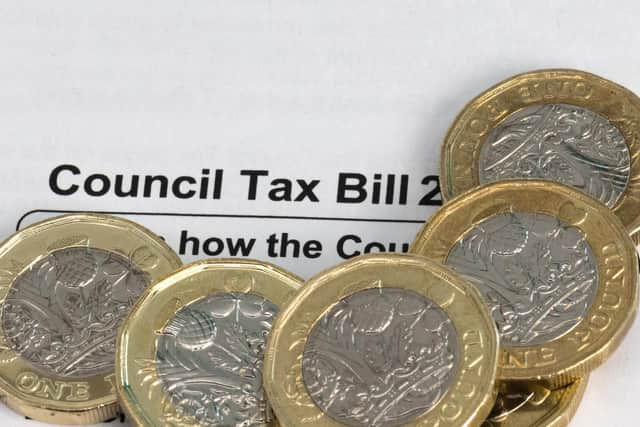Council tax: do people in Calderdale pay more or less than the national average?
and live on Freeview channel 276
English, Welsh and Scottish voters are heading to the polls in the 2022 local elections – and with the cost of living crisis continuing to bite, council tax remains as thorny an issue as ever before.
Boris Johnson has promised electors that a vote for Conservative candidates will help keep council tax low, accusing Labour controlled local authorities of imposing bigger levies on residents.
Advertisement
Hide AdAdvertisement
Hide AdBut councils across England have faced enormous budget cuts at the hands of the Tory-run central government since 2010, as NationalWorld revealed earlier this year, increasing their reliance on council taxpayers to fund vital services – against a backdrop of an ageing and growing population, which is increasingly expensive to care for.


New analysis by NationalWorld has now revealed council tax bills have risen at twice the rate of inflation in England since 2015, when the Conservatives won an overall majority in Parliament.
Residents in Scotland and Wales have also seen huge, inflation-busting rises over the last three decades of the council tax system, including over the last decade.
So how does your council tax compare to other parts of England, Scotland and Wales, has your bill risen by more or less than average, and how much faster has it risen compared to inflation over the last 30 years?
Our exclusive analysis reveals the picture where you live.
What is council tax and how is it set?
Advertisement
Hide AdAdvertisement
Hide AdCouncil tax is a system of local taxation linked to the value of properties. It is one of the main sources of funding for councils, which provide a huge range of services including education, housing, social care, sports and leisure facilities, public health, arts and culture and road maintenance.
In England and Scotland properties are placed into one of eight bands from A (cheapest council tax) to H (most expensive). In Wales there are nine bands from A to I.
Each country has a nation-wide scale for assigning properties to bands based on their historical value (the price in 1991 in England and Scotland and in 2003 in Wales).
But local councils – and other authorities funded by council tax, such as police and fire services – then set the fees that they charge for each band.
Advertisement
Hide AdAdvertisement
Hide AdHow high is Calderdale's council tax up against other parts of the country?
Council tax rates vary enormously across the country – none more so than in England, where there is a gap of more than £1,400 between the cheapest and priciest areas for a band D property, a common benchmark for comparison.
On average, band D households in England are paying £1,965.70 in 2022-23, according to figures from the Department for Levelling Up, Housing and Communities. In Calderdale band D households are paying £1,980.83, £15.13 (0.8%) more than national average.
In England band D is reserved for houses that were worth between £68,000 and £88,000 in 1991.
Advertisement
Hide AdAdvertisement
Hide AdThat could mean councils in wealthier areas are better able to keep council tax rates low, as a higher proportion of properties there will fall into bands E to H and pay the higher fees.
In poorer areas, where house prices have been consistently lower, more people may fall into bands A to C and pay the council’s cheapest rates.
But even when looking at the average amount all households pay regardless of band, Westminster still has the second lowest council tax in England (£936, compared to an average of £1,493).